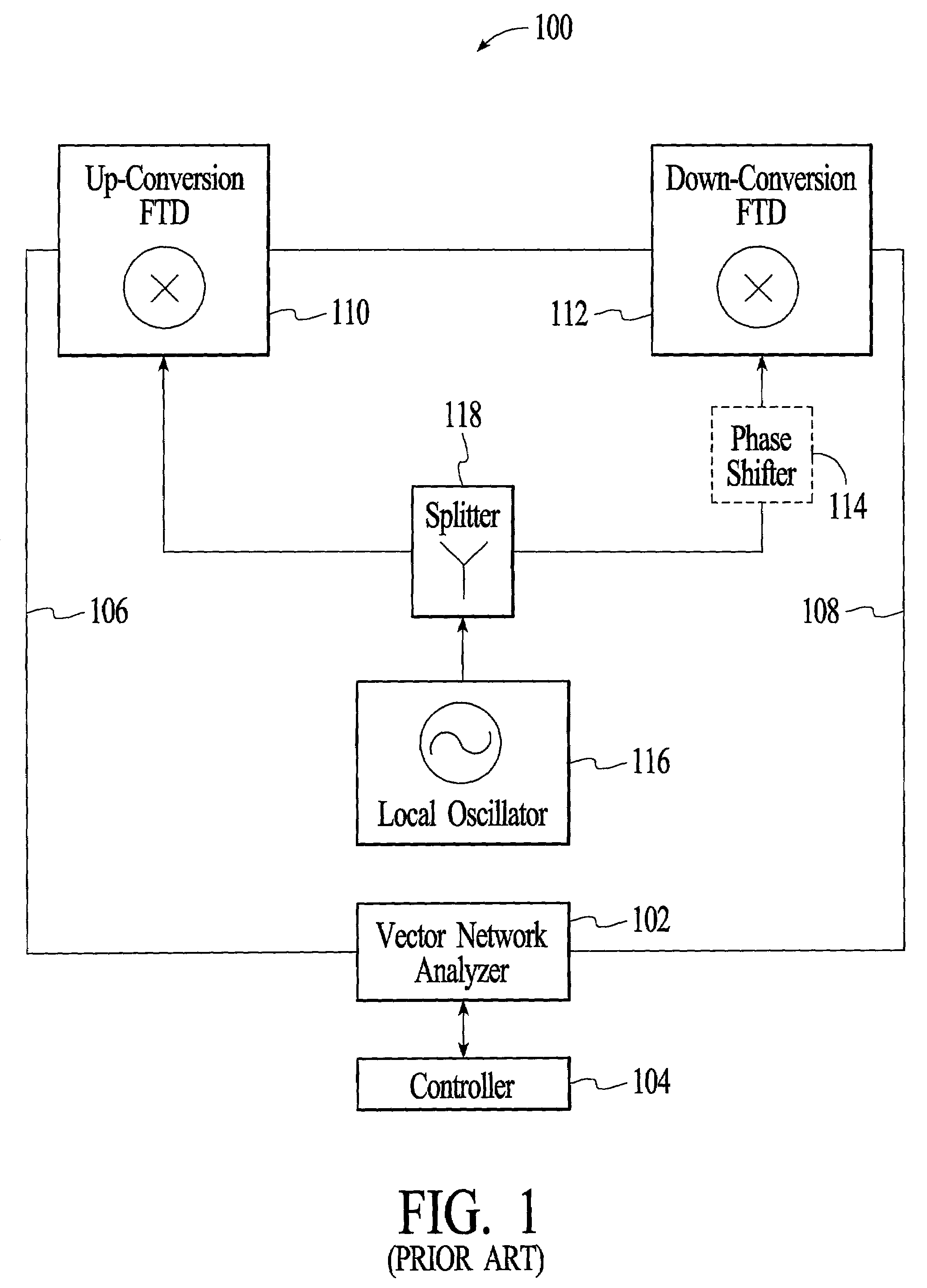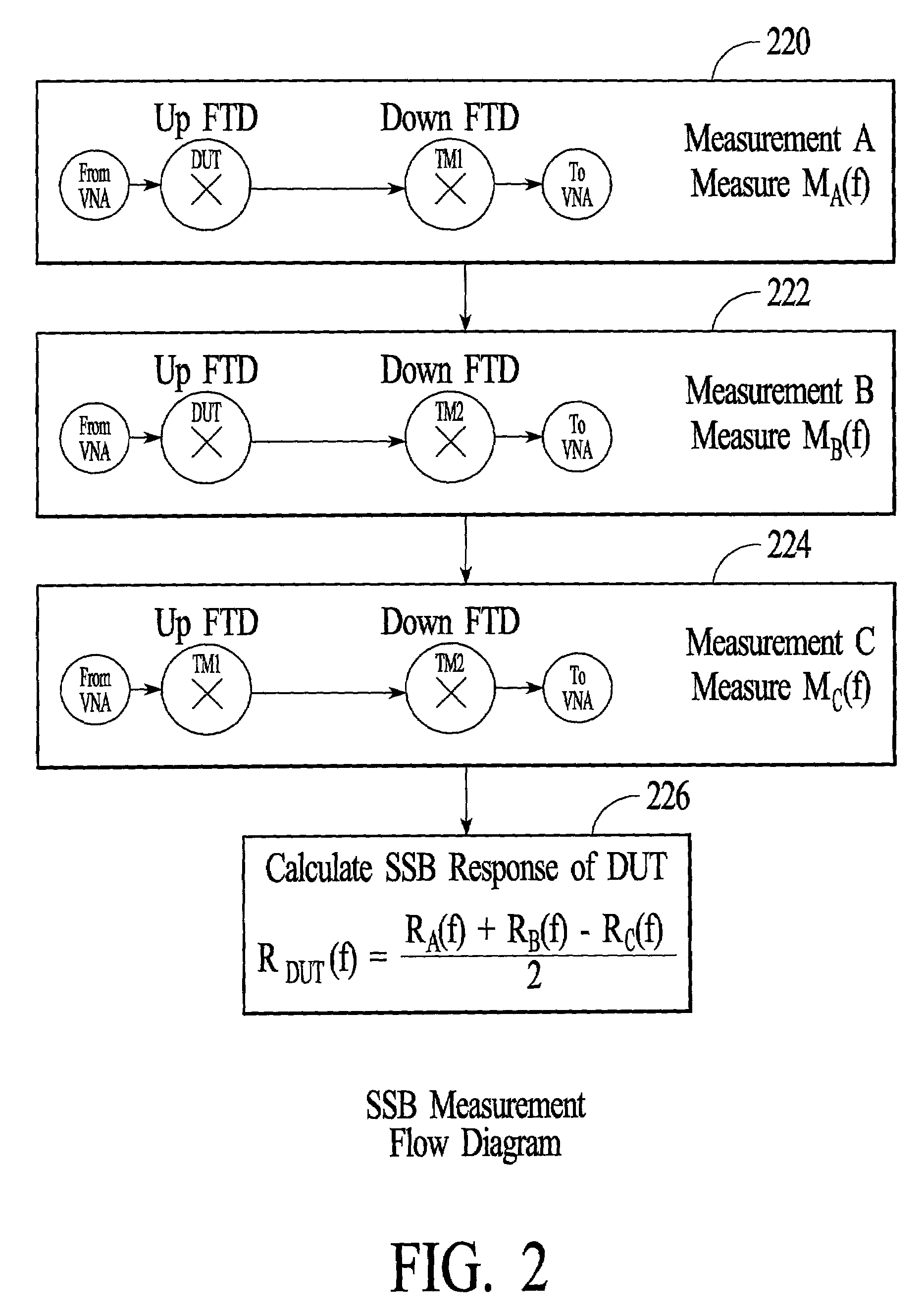Frequency translating devices and frequency translating measurement systems with DC bias added to a mixer diode
a diode and frequency translation technology, applied in the field of frequency translating devices, can solve the problems of linearity alone, insufficient linearity, and the diode-based mixers with passive diodes exhibit greater conversion loss during down-conversion than during up-conversion, so as to improve reciprocity, and reduce the peak-to-peak voltage range
- Summary
- Abstract
- Description
- Claims
- Application Information
AI Technical Summary
Benefits of technology
Problems solved by technology
Method used
Image
Examples
Embodiment Construction
[0041]As stated above, it is experimentally observed that passive diode-based mixers exhibit greater conversion loss during down-conversion than during up-conversion. The cause of this non-reciprocal behavior is a process known as parametric amplification enabled by the inherent voltage-dependent parasitic capacitance exhibited by all diodes. A diode can be modeled sufficiently for present purposes as a voltage dependent resistance 804 in parallel with a voltage-dependent capacitance 806, as shown in FIG. 8. The LO voltage that drives the resistive component of the diode to make the diode act as a switch is also available to drive the capacitive component. This causes pumping of charge through the capacitor, which is non-linear because of the voltage-dependence of the capacitance. The non-linear pumping results in parametric amplification, wherein power from the LO is converted to the output frequency. Parametric amplifiers always have gain when up-converting and loss when down-conv...
PUM
 Login to View More
Login to View More Abstract
Description
Claims
Application Information
 Login to View More
Login to View More - R&D
- Intellectual Property
- Life Sciences
- Materials
- Tech Scout
- Unparalleled Data Quality
- Higher Quality Content
- 60% Fewer Hallucinations
Browse by: Latest US Patents, China's latest patents, Technical Efficacy Thesaurus, Application Domain, Technology Topic, Popular Technical Reports.
© 2025 PatSnap. All rights reserved.Legal|Privacy policy|Modern Slavery Act Transparency Statement|Sitemap|About US| Contact US: help@patsnap.com



